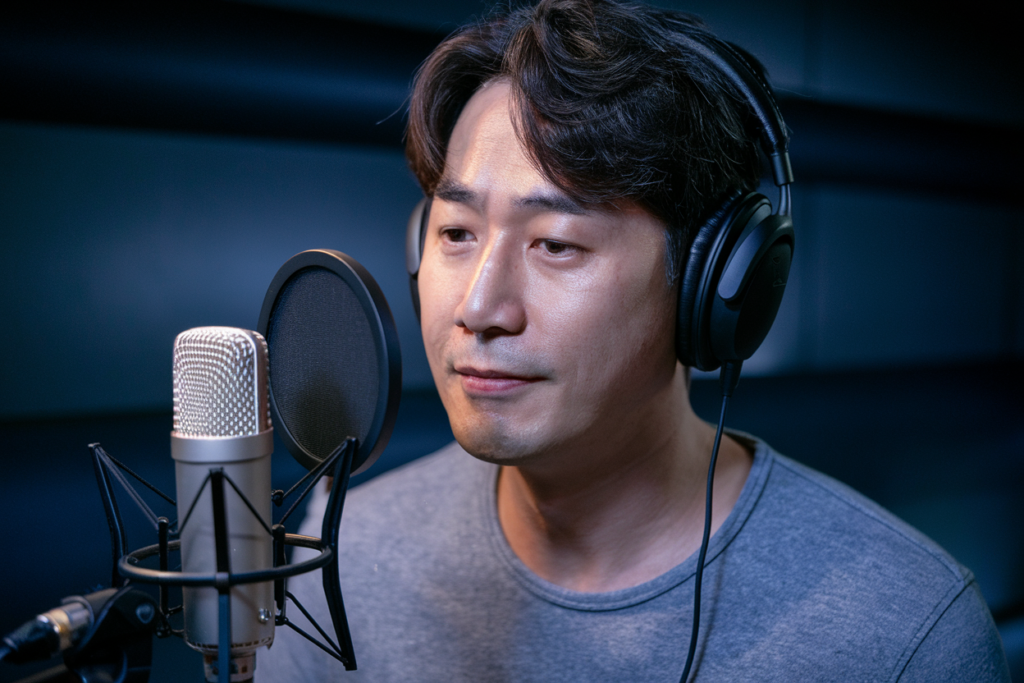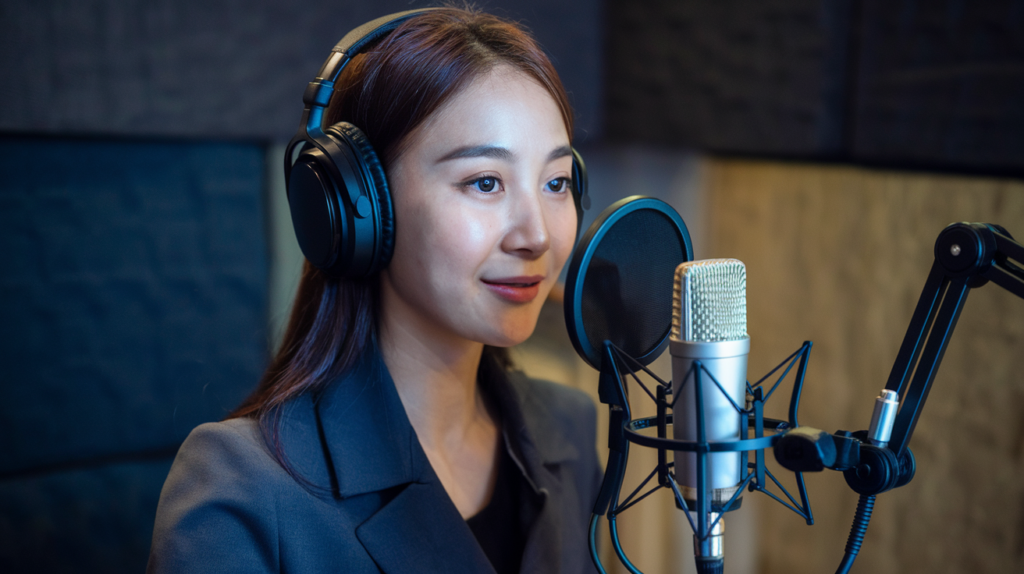Key Takeaways
- Complex Art Form: Korean lip syncing involves more than mimicking lyrics; it requires matching mouth movements with pre-recorded vocals while conveying emotion and energy.
- Extensive Training: K-pop artists undergo rigorous training to master timing and coordination, ensuring seamless integration of choreography and vocal delivery during performances.
- Cultural Expectations: Fans expect flawless performances that not only showcase vocal talent but also provide high visual appeal, adding pressure on artists to meet these standards.
- Language Nuances: The unique phonetics of the Korean language necessitate precise mouth movements and emotional expression, complicating the lip syncing process for performers.
- Technical Challenges: Synchronization between audio tracks and live visuals is crucial; any misalignment can detract from the overall performance experience, requiring meticulous practice.
- Fan Influence: The relationship between fans and performers shapes expectations around lip syncing, creating a cycle of high standards that artists strive to uphold.
Ever wondered why Korean lip syncing seems so challenging? You’re not alone. With the rise of K-pop and its global influence, many fans are curious about the intricacies behind this art form. While it might look effortless on stage, there’s a lot more to it than meets the eye.
Overview of Korean Lip Syncing
Korean lip syncing presents unique challenges, especially within the K-pop industry. This art form involves not just mimicking words but also conveying emotion and energy. Performers often face the task of matching their mouth movements with pre-recorded vocals, which may be vastly different from their live singing abilities.
Mastering this technique requires extensive training. Artists develop skills in timing and coordination to ensure that every sound aligns perfectly with their lips’ movement. The pressure intensifies when you consider the fast-paced choreography typical of K-pop performances.
Voiceovers play a significant role in this environment as well. Many artists rely on previously recorded tracks, necessitating precise synchronization during live shows or broadcasts. Voice talent is paramount here; it’s not merely about delivering lyrics but embodying the character and essence of a song.
Additionally, cultural expectations add another layer of complexity. Fans expect flawless performances that showcase both vocal ability and visual appeal. When an artist struggles with lip syncing, it can detract from the overall experience for the audience.
Korean lip syncing combines technical skill with artistic expression, making it a demanding endeavor for performers aiming to captivate fans worldwide.
Cultural Context
Korean lip syncing operates within a unique cultural landscape that shapes its practices and expectations. This context adds layers of complexity to the art form, making it more than just a performance.
Importance of Performance in Korean Entertainment
Performance holds immense significance in Korean entertainment. Artists must deliver captivating shows that blend music, dance, and engaging visuals. Fans expect high-energy presentations where every movement synchronizes perfectly with pre-recorded tracks. The reliance on voiceovers enhances this experience, as artists often use recorded vocals to maintain their energy levels during intricate choreography. Achieving this balance requires not only talent but also extensive practice and dedication.
Differences in Language and Phonetics
The nuances of the Korean language further complicate lip syncing. Unique phonetic sounds require performers to master specific mouth movements for accurate synchronization with audio recordings. Many words carry subtle emotional tones that need expression through facial gestures while maintaining vocal alignment. This necessity demands skill from voice actors who aim for authenticity in their performance, ensuring that every syllable resonates well with both the music and the audience’s expectations.
Understanding these cultural elements provides insight into why mastering Korean lip syncing poses such challenges for artists striving to connect deeply with fans around the world.
Technical Challenges
Korean lip syncing presents several technical challenges that require precision and skill. Mastering this art form involves more than just mimicking lyrics; it demands an in-depth understanding of vocal techniques and synchronization.
Vocal Techniques Used in K-Pop
Vocal techniques play a crucial role in K-Pop performances. Artists often use specific styles, like belting or breathy tones, to convey emotion effectively. These methods enhance the overall performance but can complicate lip syncing. When matching mouth movements with pre-recorded vocals, performers must replicate these nuanced vocal expressions. This alignment requires extensive training, as even slight deviations can disrupt synchronization and impact the audience’s experience.
Synchronization Between Audio and Visuals
Synchronization between audio and visuals is vital for any captivating performance. In K-Pop, artists rely heavily on voiceovers to maintain high energy levels while executing intricate choreography. Achieving perfect timing between their movements and the audio tracks demands rigorous practice. A misstep could lead to a noticeable disconnect that detracts from the show’s visual appeal. The challenge lies not only in timing but also in ensuring that facial expressions align with the emotional tone conveyed through voiceovers.
By navigating these technical challenges, K-Pop artists create unforgettable experiences that resonate with fans worldwide.
The Role of Fans and Audience Expectation
Fans play a pivotal role in shaping the expectations around Korean lip syncing. They anticipate not just polished performances but also emotional depth, demanding that artists deliver an experience that captivates them. This pressure can be immense, as fans often scrutinize every detail of a performance.
Pressure on Artists
Artists face significant pressure to meet these high expectations. While they possess talent and dedication, maintaining flawless synchronization between their movements and pre-recorded vocals requires immense skill. Voiceovers allow them to project energy during complex choreography, but this reliance can heighten anxiety. Many performers spend countless hours rehearsing to ensure they deliver a perfect show that meets fan demands.
Relationship Between Fans and Performers
The relationship between fans and performers is intricate. Fans support their idols passionately, forming deep emotional connections through music and visuals. In turn, artists strive to create engaging experiences tailored to audience preferences. This dynamic creates a cycle where high standards are set; artists must continuously evolve their craft while striving for perfection in every performance. Understanding this relationship sheds light on why Korean lip syncing presents unique challenges within the industry.
Conclusion
Korean lip syncing is an intricate art that combines technical skill with emotional expression. As you dive into the world of K-pop, you’ll see how these performers navigate the challenges of synchronization while captivating their audience. The pressure to deliver flawless performances amidst fast-paced choreography raises the stakes even higher.
Understanding these complexities enhances your appreciation for the dedication and talent involved in each show. It’s not just about singing along; it’s about creating an unforgettable experience that resonates deeply with fans. By recognizing the nuances of Korean lip syncing, you can truly grasp what makes K-pop so compelling on a global scale.
Frequently Asked Questions
What is Korean lip syncing in the context of K-pop?
Korean lip syncing refers to the practice of performers mimicking pre-recorded vocals during live performances. In K-pop, this technique allows artists to maintain high energy levels while executing complex choreography, which can be challenging when singing live.
Why do K-pop artists rely on voiceovers?
K-pop artists use voiceovers to ensure flawless performances that combine music, dance, and visuals. This reliance helps them deliver captivating shows without compromising their vocal quality due to strenuous dance routines.
What challenges do performers face with Korean lip syncing?
Performers must master timing, coordination, and emotional expression while synchronizing mouth movements with audio recordings. The fast-paced choreography and nuances of the Korean language further complicate this intricate art form.
How does cultural context influence Korean lip syncing?
Cultural expectations in Korea place a strong emphasis on performance quality. Fans anticipate polished shows that seamlessly blend various elements, compelling artists to invest significant time in perfecting their skills for emotional depth and technical precision.
What role do fans play in shaping K-pop performances?
Fans expect both high production values and emotional engagement from performances. This creates pressure on artists to continuously improve their craft, leading to rigorous rehearsal schedules aimed at meeting these elevated audience standards.







